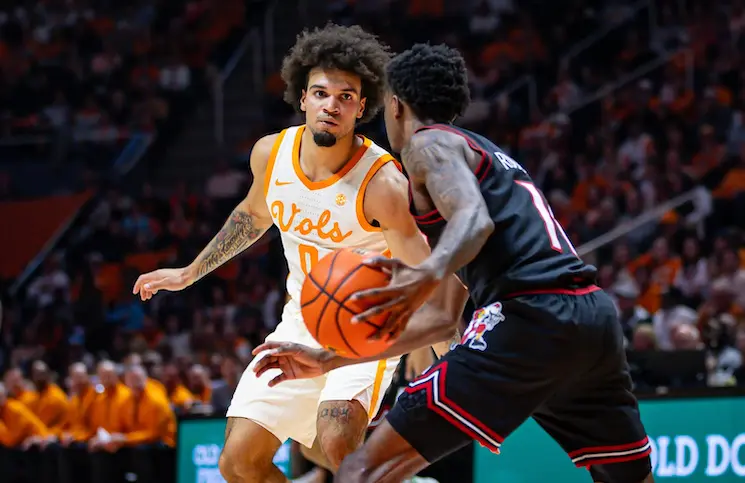
This Week in UT Sports History is a weekly column written by RTI columnist Lexie Little
Before COVID-19 effectively ended baseball in the Southeastern Conference in 2020, the Tennessee Vols held a record of 15-2. The Vols twice scored more than 20 runs in a game, beating Western Illinois, 23-4 on Feb. 16 and Longwood, 28-2, on March 3rd. Tennessee ended its season against East Tennessee State, winning 17-5. SEC play, slated to commence March 13th, would have kicked off against South Carolina.
In the SEC East standings, Tennessee stood only behind Florida in a three-way race for the top with the Gators and Georgia. The battle for the SEC featured three teams with 16-1 records (Ole Miss, Alabama, and Florida) and two teams with 15 wins (Tennessee and Texas A&M). The season, shaping up as one of the best in the conference’s history, excited fans and left them lamenting its end during the pandemic.
Tennessee’s best run for the College World Series crown came in 1951, when the Vols finished second to national champion Oklahoma. Take a look back at the first days of the team’s time in Omaha in “This Week in UT Sports History.”
June 11, 1951
Riding high on a record-breaking season, the Vols pulled into Omaha on the morning train as the first team to arrive. Fitting, because Tennessee also held the designation as the first team selected for the College World series. After losing their season opener, the orange and white rallied for 16 consecutive wins under head coach Cy Anderson.
On their way to Nebraska, the Tennessee squad stopped in Chicago at the invitation of the White Sox. The Vols attended a doubleheader between the Sox and the New York Yankees, who eventually won the World Series with Joe DiMaggio in his last season.
Eight teams arrived by June 12th for the double elimination tournament: Tennessee, Springfield College, Utah, Texas A&M, Southern California, Oklahoma, Princeton, and Ohio State.
Action for the Vols kicked off against Utah on…
June 13, 1951
Cy sighed. Cy Anderson’s Vols, the kings in the South following a stellar regular season, dropped Game 2 of the 1951 College World Series to Utah. The final score could not even be counted as respectable at 7-1. Utah’s clutch pitcher Max Pessetto only allowed four hits, all singles, and one run in the fifth inning. The Vols failed to mount any defense.
Utah’s bats got hot early, scoring two runs in the second inning. Shortstop Bill Green scored three of Utah’s seven runs with a single, long fly, and bases-loaded walk to advance the man at third.
Tennessee pitcher/first baseman John Huffstetler struck out eight batters in a complete game, but he still suffered the loss. He allowed only six hits.
Earlier in the day, Princeton lost to Southern California in Game 1. With four runs in the third inning, USC held on to win 4-1 against the Ivy Leaguers. Both Princeton and Tennessee moved into the losers’ bracket for a match-up slated for…
June 14, 1951
Only the winner would advance. The elimination game between Tennessee and Princeton proved a tight one. Both teams rallied to demonstrate the worth of their slots in Omaha. With Tennessee righthander Billy Joe Bowman allowing no hits through the first five innings, the outcome looked to favor the Volunteers.
However, Princeton starter Harry Brightman held his own. The score remained 0-0 until the seventh inning when the Vols finally came to life on offense. Harold Payne ripped a triple to center field, adding to three singles and two walks for three runs in the inning. Princeton pulled Brightman from the mound in the seventh, but reliever Ray Chirurgi allowed one run with a walk against the very next batter.
Bowman’s clutch pitching impressed the crowd. He allowed only one batter to reach first base through five innings. He walked Larry Becker in the third. No Tiger reached base again until Becker singled to right in the sixth inning.
Princeton attempted a comeback in the eighth and ninth innings. Tiger John Emery made contact on a base hit to score leadoff batter Bill Pryor, who had walked and advanced on a single from Charles Weeden. In the ninth, the tired Tennessee squad surrendered an error and a walk. Then, John Reydel’s single brought in another run for Princeton. Only down by one run, the Tigers desperately sought second wind.
They didn’t get it.
Tennessee held on to win, 3-2, and advanced in the fifth annual tournament. Tennessee’s next four games would be close, the last three decided by one run each. (But those are other stories for another week).
That season, Tennessee’s Sidney Hatfield earned the title of the College World Series Most Outstanding Player. He remains the only Vol with that distinction. Tennessee would not return to the College World Series until 1995, 44 years after their initial run. The ’95 squad finished in fourth place. The Vols’ second-highest College World Series finish came six years later in 2001, when they finished in third.
In 2021, Tennessee will return to the field under head coach Tony Vitello in his fourth year. His team finished third in the SEC East in 2019 before battling with Florida and Georgia for the first three spots in the abbreviated 2020 campaign. Under Vitello, Tennessee holds a .627 win percentage (84-50). The Vols improved from tied for sixth in the SEC East to third place from Vitello’s first to second season.
Tennessee will seek its fourth SEC title in 2021 if schedules stay on track as the world navigates life with COVD-19. The conference must first contend with the fate of fall sports, including massive moneymaker football, before turning attentions to the spring. Nonetheless, the Vols seem ready to make a run for Omaha soon.



